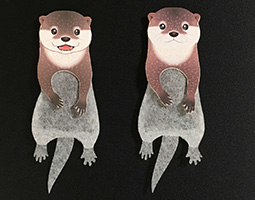March 2020
Teabags that Swim in your Cup
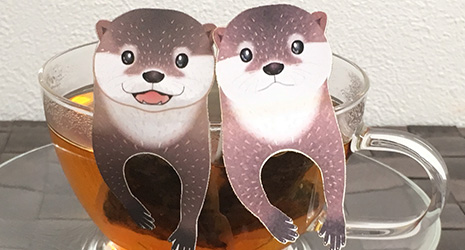
Teabags in the shape of dolphins, cats and other animals are winning popularity as novelty gifts.
Dolphins and sea turtles swimming in an ocean-like blue herb tea and a Japanese raccoon dog rocking about in roasted green tea. These teabags, based on over fifty varieties of living creatures, have gained popularity as small gifts. Over 170,000 packs have been sold since sales began in 2016, with each teabag costing around 300 to 400 yen.
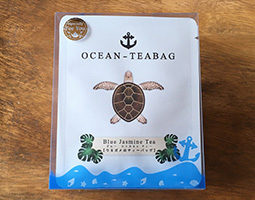
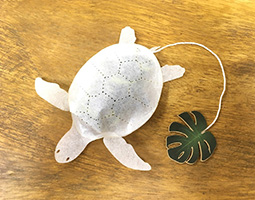
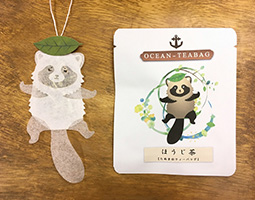
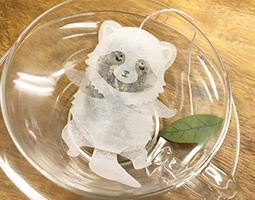
Daisho-Suisan Co. in Toda City, Saitama Prefecture, the firm behind sales and manufacturing of these unique, original tea bags, has expanded to the trading of marine products, a web business, and more, since its founding in 2014. CEO Takahashi Shota explains the background to the development of the teabags.
“The dolphin-shaped teabag that we first developed was born out of a request to create an online store for a tea plantation in Amakusa City, Kumamoto Prefecture, famous as an island for dolphin watching. Our client had the idea of creating a teabag in the shape of a dolphin, appropriate for Amakusa, and we believed that many people would be interested if we could make it.”
There were already goldfish-shaped tea bags in Taiwan, and the fact that those teabags were winning popularity confirmed the company’s belief. But Takahashi had no experience in manufacturing teabags. Because of this, the company initially wanted to outsource manufacturing to other manufacturers, but they were rejected by all the companies they consulted with. This was because it was difficult to produce teabags with a unique design in a small lot of several hundred bags, as teabags are generally low-cost items produced in large quantities by a machine.
And so, Takahashi worked on developing the teabag on his own in a trial and error process, from the searching of materials to processing methods. For normal teabags, the “handle” part is a square piece of paper, but Takahashi devoted himself to coming up with colors and designs that matched the shape of the teabag filter holding the tea leaves. For example, for the otter teabags which are said to be very popular lately, the paper upper body of the otter, which becomes the “handle,” attaches to the edge of the cup, and the lower body filter part is submerged in hot water. The design is adorable, appearing as if the otter is hanging from the cup with both of its front arms.
For the filter part, nonwoven fabric is used. A unique pattern is created, cut, combined using heat, and processed. As the complex designs have many curves, mechanizing production is difficult and most of the processing is done by hand.
“If the unwoven fabric is too thin, it will come apart when water is added and won’t take on its animal shape, but if the fabric is too thick, then the tea won’t brew properly. We came to create the teabags by combining unwoven fabric of three different thicknesses, maintaining the shape but also allowing the tea to brew.”
After sales began for the dolphin-shaped teabag, they were shown in newspapers and on television, winning popularity, and they began receiving requests for sea turtle-shaped teabags, cat-shaped teabags, and more. One after another, Takahashi added products to meet these requests, developing a rich assortment of products, including the unusual deep sea animal series, the Paleozoic era animal series, and more.
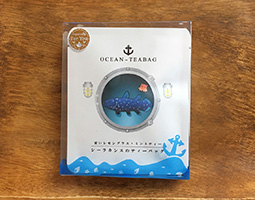
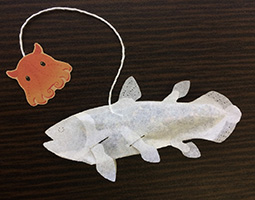
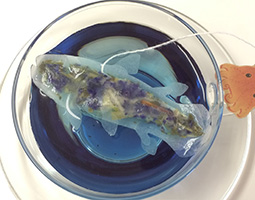
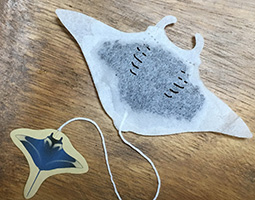
The tea in the teabags varies based on the design of the teabag, with green tea, roasted green tea, black tea, herb tea, and more. The teabags are mainly sold online, but also at variety shops, resort facilities, and more, and there are many people who buy them as gifts for friends or use them as wedding presents.
It seems that the company has plans to make teatime even more enjoyable and relaxing in the future, as it is working to turn new ideas into reality, including the development of a teabag that spins around in the cup.
